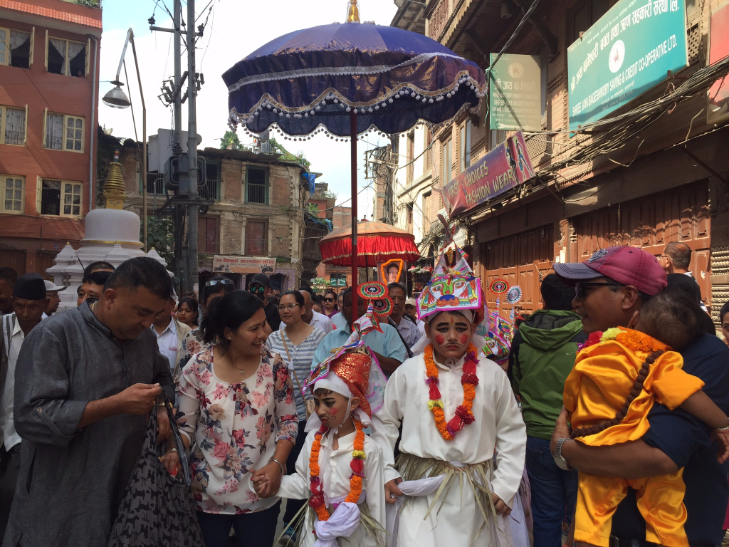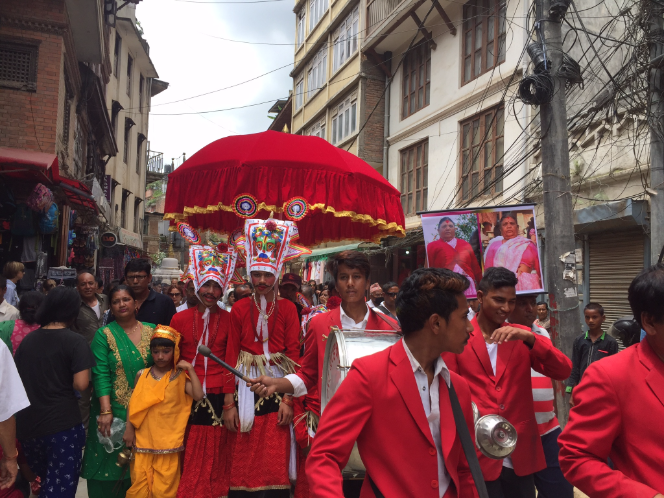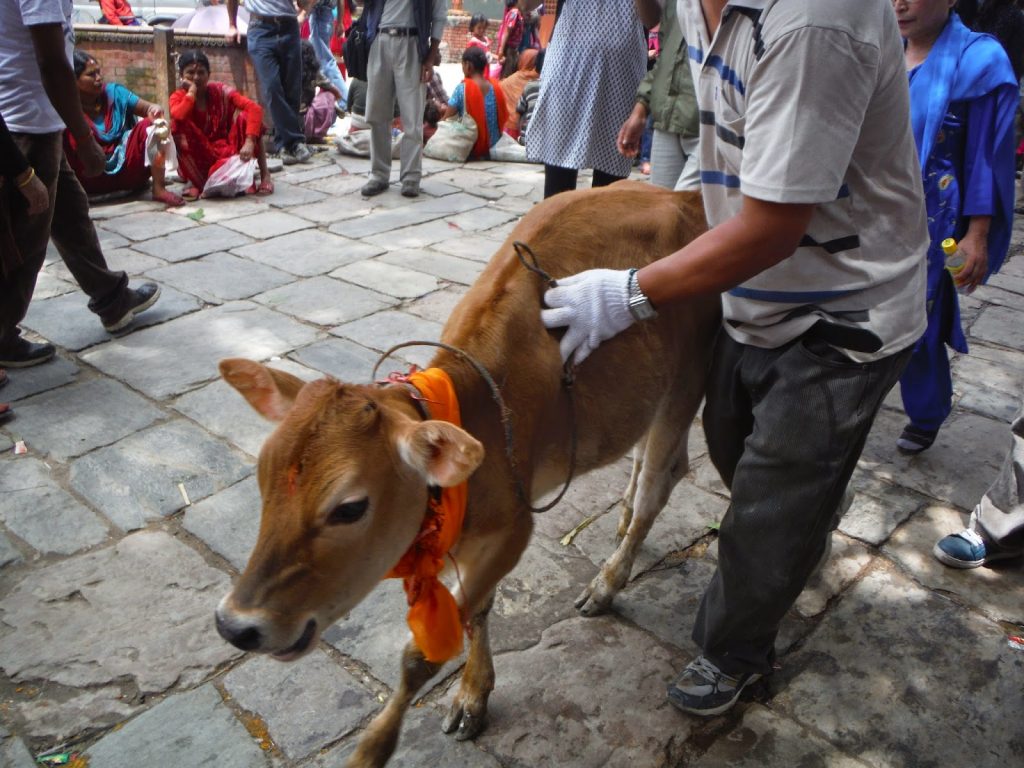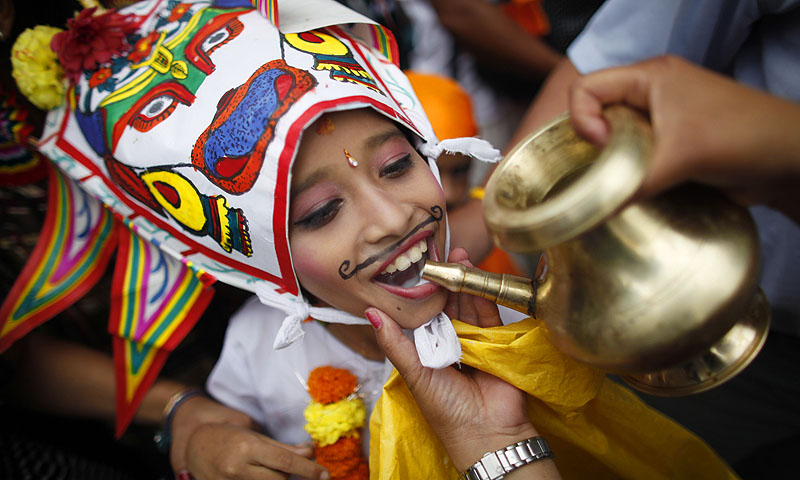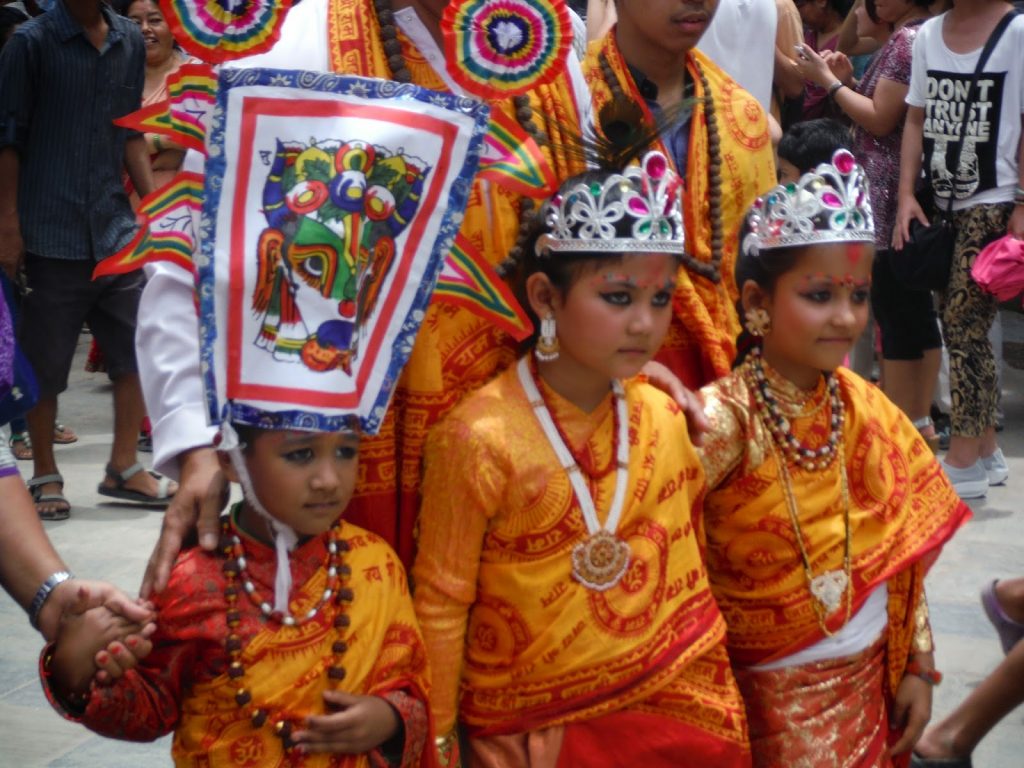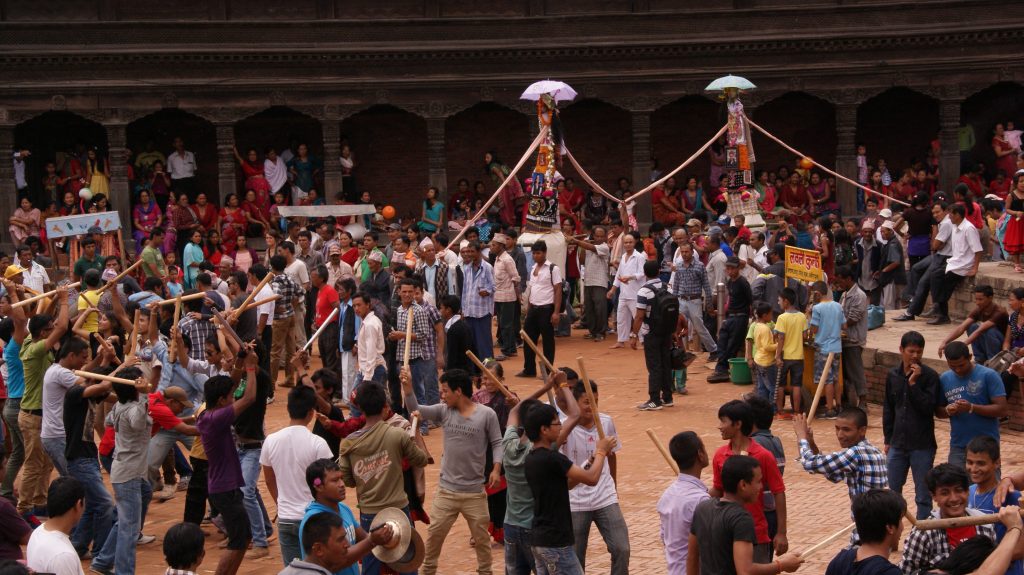Gai Jatra is the procession of sacred Cows that takes place in different parts of Nepal. The festival is celebrated in honor of the deceased family member. It is believed that when one persons’ time in the earth as a mortal being is over, Yamaraj the god of the death sends a crow to see that the released soul sits out for the judgment gates of Patal (underworld) which are opened once each year on the day of Gaijatra. On the basis of a popular puran namely “Garud Puran’, the soul of the deceased before reaching the Yama’s gate has to pass through a very difficult being. Thus, cows being the very sacred being can easily pass through every hurdles on the way. By performing different rituals the soul will cling itself to the tail of the cow and reach to the Yama’s gate who then decided the punishment or reward the soul on the basis of the deeds he/she has done when alive.
The festival of Gaijatra falls on the full moon day of August every year. The Newar Community of the valley mainly celebrates this festival. The bereaved family honors the soul of their dead by sending a religious procession through the streets along the prescribe routes of the valley. The family of the deceased who have lost their family member in the past year sends the cow or a young boy dressed as a cow to ensure the position of the lost one in the heaven. The festival started during the regime of King Pratap Malla during 17th century. The festival started as per the order of the king who was trying to convince his beloved queen after the death of their son. King then invited people who have lost their loved ones in the past to march in the costumes and start a procession with a conclusion that no matter what happens life needs to carry on.
The parade generally starts in the morning after continuing the rituals at the home of the dead by the priests. Later the boys dressed as a representation of cows, Radha Krishna, sadhus and a real cow are taken out in the streets together with their family members. Later on they are joined by hundreds of other people along the way. The procession also consists of the traditional chanting of the mantras, traditional dances and music glares in the whole city. People also volunteer by distributing biscuit, juice, sweets to the boys. The festival is later concluded ones they have finished the circumambulation of the city and return back to their respective houses.
Gai Jatra in Bhaktapur is celebrated in a different way than in Ktahmandu. Apart from family members roaming around as a cow to help their departed ones, the main attraction there in Bhaktapur is the traditional dance of this festival called ‘Ghentang ghisi’. In two long lines, girls and boys face one another; striking each other’s stick in alternating slow and fast tempo of drummers, making an electrifying thud. It has been a while that girls too are allowed to participate in ‘Ghentang ghisi’. These days one can see girls tapping feet to the rhythm and few of them beating traditional drums and clashing cymbals. The line is followed by bamboo structures covered with colorful cloth and painted pictures/clay-molds of cows symbolizing the dead. One can easily figure out whether it is for male or female. If the deceased one is male then the tall-erected bamboo is wrapped by plain white cloth, and Haku patasi (Newari traditional wear for woman) is used to cover bamboo, for woman. The line circumambulates whole Bhaktapur Durbar Square, which ends with elaborated bhoj (party).
Cities such as Kathmandu, Patan, Bhaktapur, Kirtipur, Nuwakot, Gorkha, Thankot etc celebrate this festival in their own ways. This is also the time when people perform different types of street performances and makes their controversial comments on the political scenario of the country as well as comic carry catcher of the politician.
Holy Cow during the Gaijatra Celebrations
A boy dressed in festival attire is offered milk during "Gai Jatra"
Boys and girls dressed in the festive attire
Cute Poses for the camera
Spectators watching the procession
A long parade of people circumbulating the streets of Kathmandu
 People distributing goods to the little ones
People distributing goods to the little ones
Gaijatra at Bhaktapur

